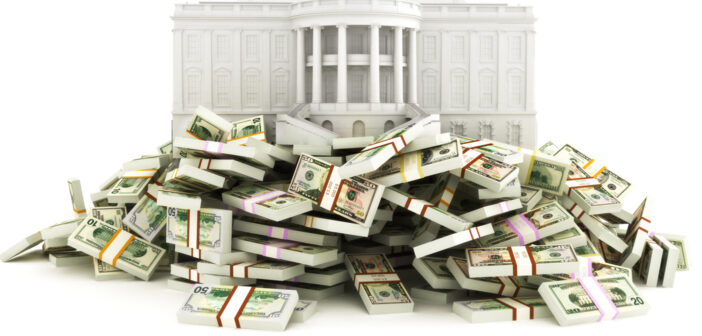On March 11, President Biden signed the $1.9 trillion COVID-19 Relief Bill. Although many Americans will welcome the $1,400 checks and other benefits, the bill presents numerous issues.
Someone gets $1,400 so long as he/she has income less than $75,000 or less than $112,500 for a head-of-household. No distinction is made for whether the recipient lost his/her job due to COVID. Consequently, this is an expensive but not targeted or effective stimulus. The cost of these checks by themselves will exceed $400 billion, which is equivalent to half of the yearly defense budget. If someone did not suffer a loss of job or income due to COVID, yet receives a check anyway, he/she is likely to save it or use it to pay down existing debt, rather than spend it on a good or service, which is how fiscal stimulus jump-starts the economy.
The Relief Bill also increases the child tax credit to $3,600 per child for children under six years old and to $3,000 per child for children older than six. Thus, a family with three children may receive upwards of $10,000 from the Federal government regardless of whether that family lost income or employment due to COVID-19. This is on top of the $2,400 check plus $500 per child from the CARES act in March 2020 and the $600 checks received in December from that relief bill. This indiscriminate spending has pushed personal income to a record high level. Much of this new income was simply saved rather than spent, as the personal savings rate jumped from 8.3% in February 2020 to 33.7% in April 2020. Enhanced unemployment benefits, which increase the unemployment benefit by $300 per week, is a much more targeted stimulus as it goes directly to someone who lost his/her job due to COVID and thus needs assistance, plus this stimulus money will be spent on a good or service.
The $350 billion in aid to state and local governments in the Relief Bill exceeds their losses of tax revenue from COVID. State and local government tax receipts declined in the second quarter of 2020 due the shutdown, but sharply rebounded in the third quarter so that the $1.941 trillion collected by state and local governments then exceeded tax revenues prior to the pandemic. There is an argument to be made that the Federal government should help state and local governments cover pandemic-related costs, but this aid should not make them more than whole.
All this spending might feel great in the short-run; but at some point, the Federal government will hit its budget constraint and need to reduce spending or raise taxes to avoid excessive inflation. Cutting spending will be difficult, as many people likely expect this stimulus spending will be permanent. Already there is talk about substantial tax increases needed to close the $4 trillion deficit this year, alone. Lavish spending today will lead to tough choices in the long-run.








